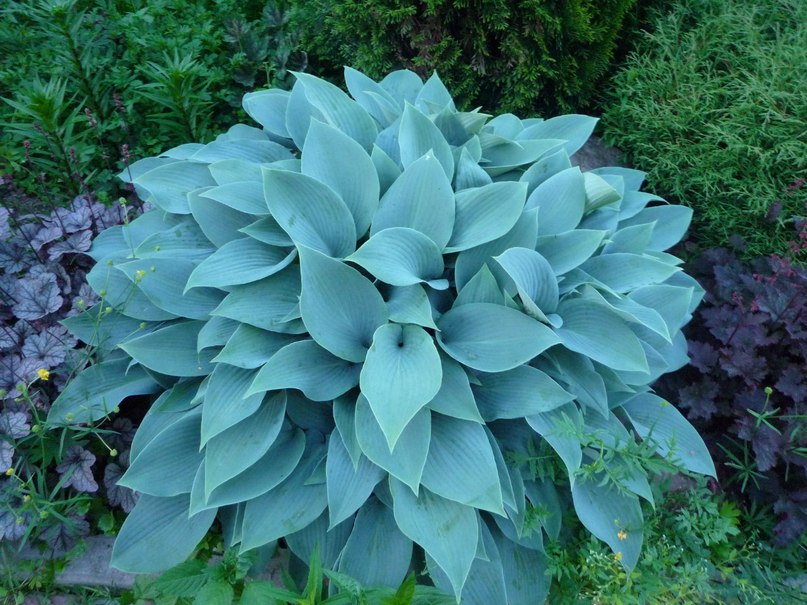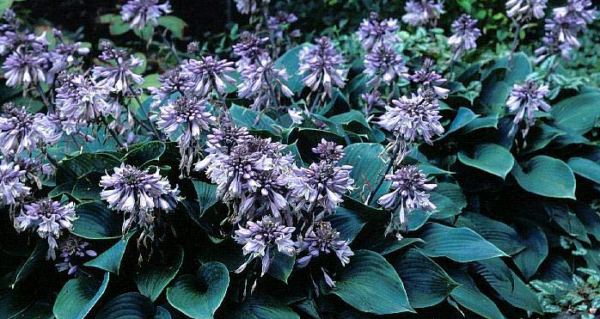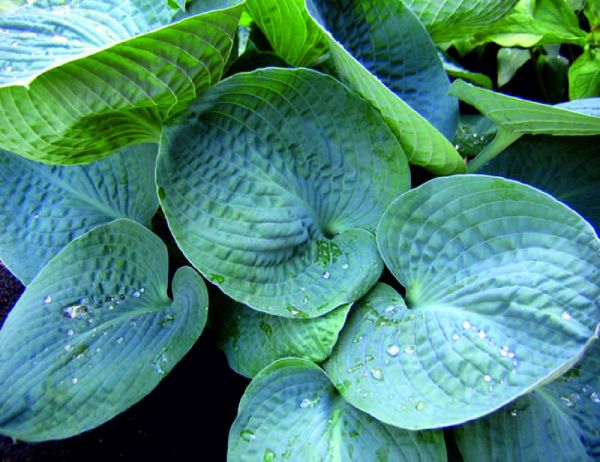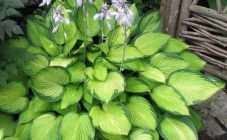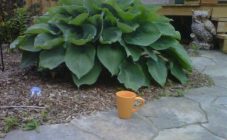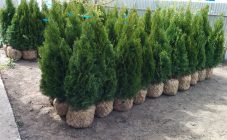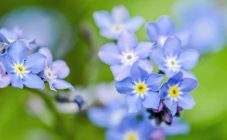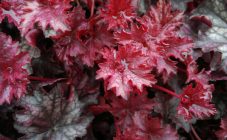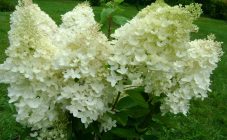Content:
Hosta is a popular plant with a dense rhizome. It is often used to decorate parks and shady courtyards. The large foliage of the perennial serves as a decoration for household plots, flower beds or a garden.
One of the main features of the blue hosta is its foliage, which has a very unusual shade of gray, with its help florists create unusual bouquets and compositions. In the circles of landscape designers, the blue hosta is popular due to the fact that it can be used to design flower beds in an original way.
Origin and description of the species
The blue hosta is a type of ground cover that protects both itself and neighboring crops from annoying weeds. The natural environment of the blue hosts is China, Korea and the Far East. The Japanese consider hosta a sacred plant and have been cultivating it in their gardens for decades.
Distinctive features of blue hosts:
- foliage is heart-shaped and rather large;
- due to the wax coating, the leaf plate has a blue-green tint, which can be seen only under sunlight;
- the flowering period of the hosta begins in the first half of June and lasts until the beginning of October.
It is not for nothing that the blue hosta is considered a real decoration of the garden. She is preferred in particular because her inflorescence is a cup, which is assembled from bells. The flowers can be lilac, lilac, and also white.
Description of popular varieties of culture
Against the background of a huge number of perennial plants, the blue hosta stands out significantly, due to which it is preferred by many landscape designers when decorating garden compositions.
To date, breeders have bred interesting varieties of a perennial plant, which made it possible to plant several blue hosts in their personal plot.
The group of classic varieties includes such popular varieties:
- Love Pat - the variety is represented by a slow-growing bush with dense blue foliage. It reaches a height of 1 m, and the inflorescences have a lavender hue.
- Halcyon - the perennial has heart-shaped embossed leaves. Plant height - no more than 50 cm. Prefers shaded areas, but the sun's rays do not harm it.
- Blue Angel or Blue Angel is a culture that is large in size, its height is 1 m, and the diameter of the leaf plate is 40 by 30 cm. Rippled leaves are covered with a bluish bloom. Inflorescences vaguely resemble hyacinth flowers, have a pleasant aroma and lavender hue.
- Hosta Blue Cadet - the variety has unusual corrugated and pointed foliage. Very often, the hosta Blue Cadet can be affected by various pests, in most cases, slugs.
- Smoke Signals - spiky foliage is directed upwards, can grow calmly under the influence of direct sunlight.
- Hosta Blue Bowl - representatives of this variety reach 1 m in height, grows under the sun, inflorescences are distinguished by the absence of aroma.The foliage is beautiful and wavy, with denticles along the edges.
- Canadian Blue is a compact Canadian blue hosta, measuring 30 cm by 40 cm.
- Blueberry Ala Mode - this plant has a white border along the edge of the foliage, and its name can literally be translated as "blueberry ice cream". The bushes are of medium size, the foliage is corrugated, rounded.
- Parisian Silk is a wide and low crop, prefers to grow in shady areas. The leaf plates are characterized by a round shape and a silvery-blue tint. The hosta blooms with pink inflorescences for a fairly long period.
- The most hardy and strongest is the blue hosta variety called Big Daddy. Its width is 1 m, as is its height. Wrinkled leaves are distinguished by a matte shade, dense structure and rounded shape.
All of the above varieties have their own disadvantages and advantages. Before growing this or that varietal variety, you must definitely familiarize yourself with the general rules for agricultural technology and plant care.
Hosta Blue Angel boarding and leaving
It is necessary to plant the Blue Angel host with the onset of spring and must start by choosing a suitable place. If you plant a crop in areas that are exposed to direct sunlight, it will lose its bluish tint and acquire a normal green color. This is the reason why shaded areas should be chosen. A perennial plant will do well under the crown of a tree or any other large plant.
The blue angel prefers slightly acidic and moist soil, but the bottom of the planting pit must be covered with a thick layer of drainage. Loamy and sandy soil adversely affects the active development. It should be borne in mind that the culture does not tolerate drafts, so the garden bed for planting it must be protected from the cold wind flows.
Before planting the Blue Angel hostu, it is recommended to loosen the soil, and then add a complex fertilizer to stimulate the plant roots.
It is necessary to dig a planting hole, the depth of which should be twice the length of the roots of the culture. Be sure to monitor the level of the root collar (it should be flush with the ground).
The root system of the seedling must be straightened during planting, and then sprinkled with earth. The soil should be rolled and mulched using bark. The final step will be abundant watering of the hosts.
Pests and diseases of blue hosts
The blue hosta conceived can be damaged by slugs and snails. They feed on succulent foliage, and their silvery traces spoil the appearance of the plant.
As for small rodents, they pose a danger to the root system of a perennial. In order to fight pests, you need to scatter a poisonous bait around after planting the seedlings.
Host parasite attacks are most common in winter. If, with the onset of spring, the culture does not have fresh foliage, this indicates damage to the roots by insects. To check this, the plant must be removed from the ground and carefully examined.
Another dangerous pest for a plant such as the blue hosta is the caterpillar, which can destroy perennials in just one night. You need to fight insects with the help of special chemicals - insecticides.
Nematodes are dangerous pests that destroy the host by feeding on its foliage. It is possible to determine that the plant is affected by nematode worms by the presence of brown stripes located on the veins of the leaf plates.
In addition to insects and rodents, perennials can die from fungal diseases and viruses.The first warning signs of damage are represented by yellow spots and dots on the leaves.
Important! To date, there are no effective ways to fight viruses, so a sick host should be dug up and burned so that the infection does not spread to other plants.
Fungal infection can lead to phylostictosis. The most vulnerable are those plants that were weakened due to heavy wintering, as well as those in which the top froze under the influence of repeated frosts. Traces of the disease are represented by large merging brown spots that cover a grayish bloom.
Another common disease of blue hosta is anthracnose, which affects those bushes that have become weakened due to a lack of minerals. The disease can also be triggered by excessive moisture levels. The initial stage of anthracnose must be treated by using systemic fungicides such as Abiga Peak, Bordeaux mixture and Gamair.
The blue hosta is a versatile plant that prefers to grow in shaded areas. She is able to get along with many plants, as she has no special requirements for care and cultivation. Hosta can be combined with plants such as lungwort, fern, aquilegia, astilba and others. You can add special charm to a garden plot by decorating a fountain, a pond perimeter or an artificial waterfall with a host.
